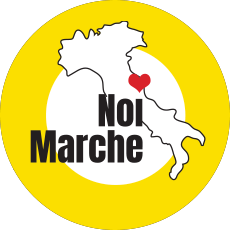Fano, a seaside city, inhabited for centuries by fishermen and sailors. Fano, city of art, nestled between the hills and the Adriatic, proud of its long history. Fano, a city attentive to the ecological conservation of the environment - sea, hills, urban spaces - and for this reason has been awarded several times. Fano, a city capable of welcoming and hosting.
A city with a very important historical and cultural heritage, it is located in the heart of the Marche, a geographically strategic area. In addition to having all the advantages of a seaside city, it boasts a green hinterland and a nature in which to immerse yourself in bucolic experiences, without forgetting the many important historical and architectural elements that characterize it. The origins of Fano go back a long way, since the ancient Romans settled here, giving it the name "Fanum Fortunae" first, due to the presence of a temple dedicated to the Goddess of Fortune, and then "Colonia Julia Fanestris". In the center of the city it is possible to breathe these ancient origins evident in the many still intact remains that date back to the period of the Roman Empire, a city with which there has always been a direct connection thanks to the Via Flaminia.Con il tempo la città è stata in grado di svilupparsi riuscendo ad espandere i suoi confini pur mantenendo la forte identità territoriale ancorata alle origini marinare. Oggi Fano è la terza città delle Marche per popolazione, con più di 60.000 abitanti ed un florido settore turistico, con visitatori provenienti da tutta Italia ed Europa che scelgono Fano per le bellezze naturalistiche e culturali che la contraddistinguono e anche per partecipare ai tantissimi eventi di pregio che la animano durante tutto l’anno.
Fano non è solo mare, è anche storia e tradizione. Due aspetti ben visibili sin dall’arrivo in città. Dai resti della civiltà romana, fino alla zona del Porto, passando per degli edifici storici e tanto altro ancora.







